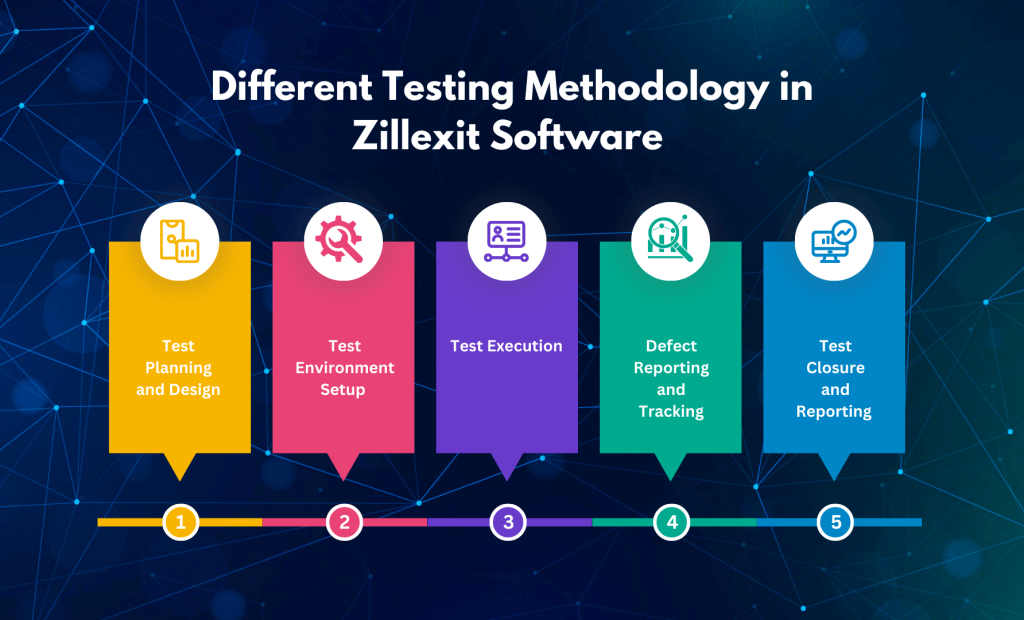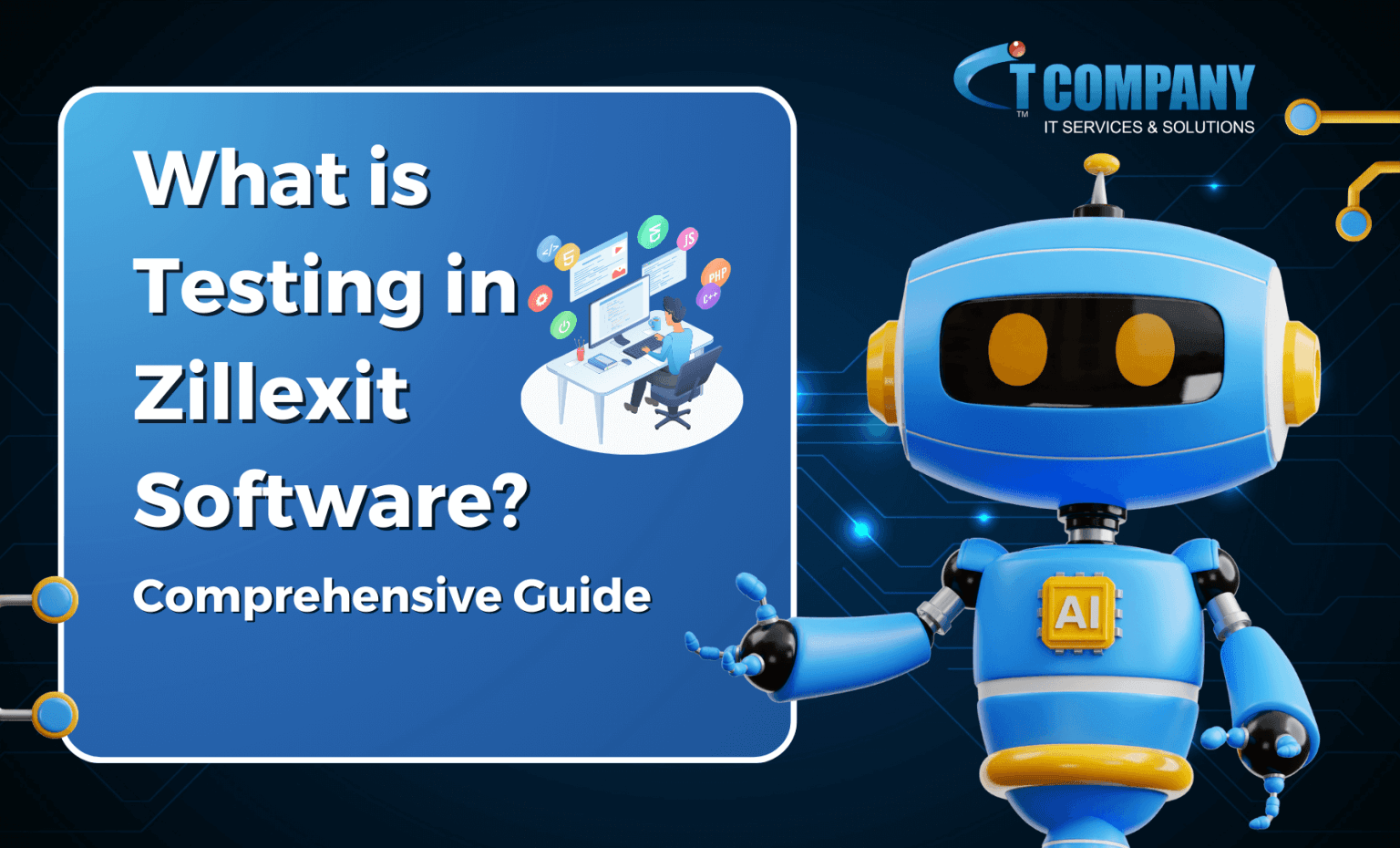Introduction
Testing is a critical phase in the software development lifecycle, aiming to ensure that the software works as intended and meets all specified requirements. In the context of Zillexit software, testing plays an essential role in providing a seamless user experience and ensuring the software’s reliability.
How Zillexit Software is Different from Other Software
Zillexit software stands out in several key aspects that differentiate it from other software in the market.
- Advanced Data Handling Capabilities: Unlike many competitors, Zillexit is specifically designed to manage and process large volumes of data efficiently. This feature is particularly beneficial for organizations dealing with extensive datasets, ensuring smooth operation without performance degradation even in
- Rigorous Compliance Adherence: Zillexit’s commitment to meeting industry standards and regulatory requirements is unmatched. Its built-in compliance features ensure seamless adherence to the latest legal and security standards, providing peace of mind to users in regulated industries.
- Optimized Mobile Usability: The software is highly optimized for website design , offering a mobile responsive and user-friendly interface across all mobile devices. This ensures that users can access and utilize the full range of features while on the go, without compromising on experience or functionality.
- Seamless API Integration: Zillexit excels in its ability to integrate with a wide variety of third-party applications through its robust API capabilities. This allows businesses to create a cohesive technology ecosystem, enhancing workflow efficiency and data interoperability.
- User-Friendly Installation and Setup: One of the distinguishing features of Zillexit is its straightforward and intuitive installation process. Unlike other software that may require extensive technical knowledge and effort to get up and running, Zillexit ensures that users can easily and quickly install and configure the software without hassles.
These distinct characteristics make Zillexit a superior choice for businesses looking for reliable, efficient, and user-centric software solutions.
Testing Objectives for Zillexit Software
The primary objectives for testing Zillexit software include:
- Verify Key Features: Ensure that all key features are functioning correctly and as expected.
- Performance Under Load: Test the software’s ability to handle large volumes of data efficiently.
- Compliance: Confirm that the software meets all necessary standards and regulatory requirements.
- Mobile Usability: Assess the usability and functionality when accessed from mobile devices.
- API Functionality: Validate the seamless integration and functionality of APIs.
- Installation and Setup: Ensure that the installation and setup process is straightforward and works without issues.
Testing Scope
1. Handling Large Volumes of Data
- Objective: Ensure the software can efficiently handle and process large datasets without performance degradation.
- Tests:
- Load testing to simulate high data volumes.
- Stress testing to determine the software’s breaking point.
- Data integrity checks to ensure accuracy and consistency.
2. Standards and Regulations
- Objective: Verify compliance with industry standards and regulatory requirements.
- Tests:
- Security testing to ensure data protection and privacy.
- Compliance audits to check adherence to legal and regulatory standards.
3. Mobile Usability
- Objective: Ensure a seamless and user-friendly experience on mobile devices.
- Tests:
- Responsive design testing to verify the software’s adaptability to various screen sizes.
- Usability testing to evaluate user experience and interface design.
- Performance testing to ensure quick load times and smooth operation.
4. API Integration
- Objective: Validate the correct functionality and integration of APIs.
- Tests:
- Functional testing to verify API endpoints and data exchanges.
- Security testing to ensure the protection of data transmitted via API Integration.
- Performance testing to assess response times and throughput.
5. Installation and Setup
- Objective: Ensure that the software installation and setup process is user-friendly and error-free.
- Tests:
- Installation testing across different environments and configurations.
- Setup procedure validation to identify and resolve any potential issues.
- User documentation review to ensure clarity and completeness.

Introduction
This detailed example will provide insights into how the software helped a large financial institution overcome significant challenges related to data handling and regulatory compliance.
Background
Client: A leading financial institution with a vast network of branches and a substantial customer base.
Industry: Finance and banking, characterized by stringent regulatory requirements and the need for robust data processing capabilities.
The Challenge
The financial institution faced several critical challenges:
- Data Overload: With the growing number of transactions and customer interactions, the institution had to process and manage increasingly large volumes of data efficiently.
- Regulatory Compliance: The institution needed to comply with strict financial regulations, including data protection laws and industry-specific standards.
- Performance Optimization: Ensuring that data processing and system performance remained optimal under peak loads was crucial to maintaining customer satisfaction and operational efficiency.
The Solution
After evaluating several solutions, the financial institution chose Zillexit software due to its advanced data handling capabilities and compliance features. The implementation process included:
- Customization: Tailoring the software to meet the institution’s specific data processing requirements.
- Training: Providing training sessions for the institution’s IT staff to ensure smooth adoption and operation.
- Testing: Conducting comprehensive testing to verify the software’s performance, compliance, and overall functionality.
Outcomes
The implementation of Zillexit software yielded impressive results:
- Increased Data Processing Efficiency: The institution reported a 30% increase in data processing efficiency, enabling faster transaction handling and improved customer service.
- Full Regulatory Compliance: Zillexit ensured that all financial data was processed in compliance with relevant regulations, significantly reducing the risk of non-compliance penalties.
- Enhanced Performance: The software’s robust architecture minimized performance degradation even during peak transaction periods, maintaining high system reliability.
Client Testimonial
The institution’s Chief Information Officer (CIO) stated, “The deployment of Zillexit software has revolutionized our data management practices. Not only have we seen a marked improvement in processing efficiency, but we also now have full confidence in our compliance with industry regulations. Zillexit has become an integral part of our operational infrastructure, allowing us to serve our customers better than ever before.”
Conclusion
This real-world case study highlights the tangible benefits and transformative impact of Zillexit software for large organizations dealing with extensive data and regulatory requirements. By offering a combination of advanced data handling, compliance assurance, and performance optimization, Zillexit stands out as a vital tool for financial institutions looking to enhance their operational capabilities and customer satisfaction.

To ensure the Zillexit software meets the highest standards of performance, compliance, and user satisfaction, a comprehensive and systematic testing methodology is implemented. This approach involves multiple phases and test types, each tailored to achieve specific objectives and uncover potential issues.
1. Test Planning and Design
During the planning and design phase, detailed test plans and cases are developed based on the software requirements and intended functionalities. This stage includes:
- Requirement Analysis: Thorough review of the software requirements to identify testable elements.
- Test Case Design: Creation of detailed test cases that cover all possible scenarios and edge cases.
- Resource Allocation: Identification and assignment of testing resources, including personnel, hardware, and software tools.
2. Test Environment Setup
The next step involves setting up the test environment to ensure it matches the production environment as closely as possible. Key activities in this phase include:
- Environment Configuration: Installation and configuration of software, databases, and network settings.
- Data Preparation: Generation or acquisition of test data that mimics real-world usage scenarios.
3. Test Execution
This phase brings the test plans and cases to life. Types of tests executed during this phase include:
- Functional Testing: Verifying that all features and functionalities work as intended.
- Performance Testing: Evaluating how the software performs under various conditions, including load and stress tests.
- Security Testing: Ensuring that the software is secure against potential threats and vulnerabilities.
- Usability Testing: Assessing the user-friendliness and overall user experience of the software.
- Compliance Testing: Confirming adherence to regulatory and legal standards.
4. Defect Reporting and Tracking
Identified defects and issues are documented and managed through a formal reporting and tracking system. This includes:
- Defect Logging: Recording all identified issues with detailed descriptions and steps to reproduce.
- Prioritization: Categorizing defects based on severity and impact on the software.
- Tracking and Resolution: Monitoring the progress of defect resolution and retesting to ensure fixes are effective.
5. Test Closure and Reporting
The final phase includes summarizing the testing activities and results. Key activities include:
- Test Summary Report: Compilation of a report detailing test cases executed, defects found, testing outcomes, and overall quality assessment.
- Post-Mortem Review: Review meeting to discuss the testing process, identify lessons learned, and suggest improvements for future testing cycles.
By following this meticulous testing methodology, Zillexit ensures that its software not only meets but exceeds the expectations of users and stakeholders, guaranteeing reliability, performance, and regulatory compliance.
Conclusion
Testing is integral to ensuring that Zillexit software delivers its key features effectively, complies with industry standards, and provides a seamless user experience. By focusing on critical areas such as data handling, compliance, mobile usability, API integration, and installation, we can ensure that Zillexit software meets and exceeds user expectations.
FAQs
What is software testing and example?
Example: Testing a web application to verify all links work correctly and pages load properly.


















